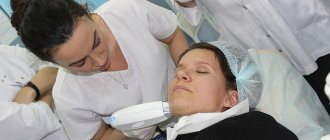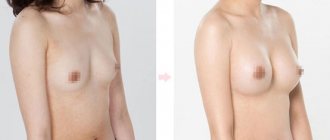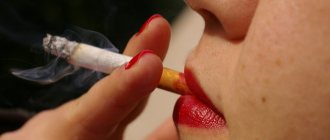At first glance, an ingrown toenail does not pose a serious health hazard, but this is a misleading opinion. The disease (onychocryptosis) threatens with severe complications, including amputation.
A person not only loses a normal standard of living, constantly experiencing pain when walking, but is also exposed to infection through the affected area.
How the problem starts
More often, the big toe suffers; the nail begins to grow into the soft tissues near the nail fold.
In this case, the damaged area becomes sensitive, swollen, redness appears, and over time, pus and ichor appear.
Deposits in the form of a red granulation tissue layer are observed on the finger. With inadequate treatment, it becomes denser, disfiguring the phalanx and changing its structure.
With this type of development, only surgical intervention is indicated.Traditional recipes will help
If you have just felt discomfort, the pain is not yet very strong and the matter has not reached the point of inflammation, you can use a few simple tips.
- The most affordable remedy is salt foot baths. It is better to do them regularly, before going to bed, when your legs are no longer exposed to stress. To do this, warm water is poured into a basin and a handful of coarsely ground sea or table salt is dissolved in it. It wouldn’t hurt to add a little potassium permanganate or furatsilin there as a disinfectant. This bath will help soften the nails and the skin around them. When the skin has sufficiently steamed, it is recommended to carefully lift the sharp, traumatic edge of the nail and place a thin cotton pad or gauze under it, well moistened with wound-healing ointment or any oil. The traumatic edge of the nail will rise, thereby reducing pain.
- A very effective way to reduce redness, swelling, pain, and stop inflammation is warm baths with the addition of medicinal herbs (St. John’s wort or chamomile). So, a chamomile bath is prepared as follows: - 6 tbsp. spoons of dry chamomile flowers - 2 liters of boiling water.
Chamomile is poured with boiling water, the dishes are covered. You need to insist for an hour.
- aloe leaf as a night lotion . Its size should correspond to the size of the diseased nail. Before the procedure, the leaf must be cut in half. To soften it, hold the back side over the fire, and then bandage it to the injured finger and wrap it in cellophane. In the morning, if necessary, trim the overgrown piece of the nail and change the bandage.
- lotions with fir oil for several days . This will help relieve inflammation and soften the nail.
- An interesting recipe using kombucha. The mushroom must be divided into layers. Use one of them as a bandage, wrapping it around your sore finger. Cover the top with cellophane film and put on socks - cotton and wool. After a couple of days, your “teamushroom” compress will soften the nail, and it will be easier and more painless to deal with.
Need to know: Tinedol - cream for foot fungus
Why do unwanted manifestations happen?
Doctors have identified the causes of the disease:
- Sloppy pedicure. The corners are cut incorrectly - the edges should not be rounded or cut too short.
- Narrow shoes that force the sharp end to press into the skin.
- Finger wounds or injuries.
- A fungus that causes nails to peel off.
- Orthopedic malformation of the foot, including deformation of the big toe.
- Lack of proper hygiene. You should wash your limbs every day, changing socks.
- Genetic predisposition.
In addition to these factors, trouble is caused by flat feet, chemotherapy, diabetes, hyperhidrosis (excessive sweating), and obesity.
Symptoms
Problems are indicated by:
- pain that worsens when wearing shoes;
- redness, swelling, pulsation, purulent discharge, indicating infection;
- presence of ulcers;
- increased growth of tissue around the nail, similar to wild meat;
- The late stage is characterized by a change in the shape of the plate, its compaction, and coarsening of the soft tissues.
Help yourself
Do not think that the issue will be resolved on its own. With inactivity, the indicators will increase, and the pain will bother you even in the absence of movement. What to do if a nail grows on your foot?
The initial level involves careful care of the affected area. Warm baths, several times a day, with the addition of salt, soap, and antibacterial agents will be beneficial.
After this, try to slip a gauze flagellum soaked in chlorhexidine and myrogen under the ingrown part of the nail. They change it daily, trying to move it lower.
At the initial stage, try exposure to boiling water. The finger is dipped into a container of hot water for two seconds and quickly returned back. Repeat 15 times.
We recommend reading:
Cuticle removal - tips on choosing products and an overview of the best removal methods. 130 photos and videos of cuticle careHow to restore nails after gel polish - a review of the best means and methods of restoration at home (120 photos + video master class)
Magnet for a cat's eye: tips on how to apply iridescence simply and beautifully with your own hands (110 photos + video)
There is another method that advises what you can do yourself if the nail has grown into the skin.
In the middle, a groove is cut with an ordinary nail file that does not affect the nail bed. It will help tighten the corners, as a result of which the correct growth of the plate will be normalized.
general information
Onychocryptosis is the correct name for this disease. The edge of the nail, most often on the big toe, grows into the nail bed for various reasons.
The essence of the problem:
- the area where the ingrowth of the nail plate occurs is small, but the body believes that a foreign body is embedded in the tissue, which needs to be gotten rid of;
- active resistance begins, suppuration develops, the person is tormented by throbbing and aching pain;
- the finger swells. In the absence of adequate treatment, pus spreads to adjacent tissues, acute purulent inflammation (phlegmon) develops;
- in severe cases, the infection affects a large area, and gangrene is diagnosed. Sometimes it ends in amputation.
Important! The longer the wounds take to heal, the more the disease progresses. Diabetics often suffer from the effects of suppuration on the toes. Complications often occur.
How is the treatment carried out?
What should you do if your ingrown toenail hurts? The initial remedy is gluing a specific plate, which, by moving the edges apart, gives the nail a flat appearance, preventing further progress of the disease. You can apply varnish to such a surface, and wearing shoes will not cause suffering.
A special wire structure, similar to dental braces, is also installed on the nail plate, preventing the edges of the nails from coming into contact with the skin. The devices are easy to attach and help straighten the nail, relieving pain.A mild degree can be stopped by resorting to hardware medical pedicure. The process does not require soaking your feet and eliminates sharp objects.
The treatment is carried out using grinding rollers and stops the ingrowth. Cream Stellanin, Nogtinorm, Uroderm will help reduce inflammation and pain.
Preventive recommendations
Following simple rules will help you avoid unpleasant symptoms.
Take note:
- buy comfortable shoes. Avoid "pointy" models. Compressed fingers can lead to ingrown nail plates, inflammation and “wild meat”;
- Perhaps after a while you will feel that you were wrong with the size, or it turned out that the shoes do not fit well on your feet, your toes are curled, they hurt. Replace this pair of shoes with another without regret. Think about what to spend your money on: buying new shoes or treating a painful ingrown toenail;
- wear only your own shoes, including slippers. Fungal infections of the skin are one of the common causes of damage to the nail plate;
- For congenital defects (clubfoot, flatfoot), curvature of nails, fingers, consult a surgeon as soon as possible. Timely correction will help avoid problems in the future;
- trim your nails correctly, do not cut them too short, moderately round the edges of the stratum corneum, do not provoke ingrown edges;
- In case of bruises, frostbite, or injured toes, monitor the development of the process. At the first sign of onychocryptosis, tell your doctor;
- Do pedicures regularly, taking into account the rules for cutting nails. When visiting the salon, ask the specialist not to shorten your nails to the minimum length;
- Maintain the health and strength of the nail plates, do not allow them to peel off or thicken. Poor condition of the stratum corneum is a direct path to injury to the nail fold, soft tissue in the adjacent area, and infection through damaged skin.
Follow the preventive recommendations, and such a nuisance as an ingrown toenail will bypass you. Be healthy!
Next video. An excerpt from the TV show “Live Healthy,” in which Elena Malysheva will tell even more details about an ingrown toenail:
Cauterization with laser
The high-tech procedure takes place under local anesthesia.
Using a laser beam, the surgeon burns out small depressions in the problem area, through which the nail plate is exposed, destroying growth cells and stopping inflammation. This stops the growth of the traumatic area and causes stable remission.
Removal by radio waves
A gentle technique removes the ingrown part of the nail, including the nearby area, and also cleans the growth zone. After the manipulation, there are no scars or stitches.
When an ingrown toenail begins to fester, the first thing to do is immediately go to a surgeon or orthopedist.
You will need to take a blood test to understand the stage of the inflammatory process, ruling out diabetes mellitus. An x-ray will be needed to provide the specialist with information about the source of suppuration.
The most effective and modern way out in this situation is to turn to radio waves and lasers. Their advantages:
- the risk of relapse is excluded;
- the recovery period is short;
- nail removal is accompanied by disinfection;
- no blood is lost.
The fact that a person experiences painful discomfort is not so bad. But ignoring the symptoms, it provokes dangerous complications such as purulent abscess, gangrene, osteomyelitis. Therefore, take care of your feet and do not put off visiting a doctor.
Stages of development and symptoms
If the toenail is ingrown, a person experiences mild pain when putting on and wearing tight shoes. The further the process of ingrown toenails develops, the more intense the pain. It is pulsating in nature. This pain is accompanied by hyperthermia. Over time, swelling appears in the affected area, a feeling of pressure is felt even when there are no shoes on the feet. The described symptoms are characteristic of the first stage of the disease.
As a rule, not every patient knows how to treat an ingrown toenail at this stage, so the condition worsens: the angle of the ingrown toenail becomes sharp, the swelling increases, and purulent inflammation appears. Pus flows out from under the nail fold and becomes purple in color. When such symptoms are detected, the second stage of the pathology is diagnosed.
Some people, even in this case, do not always seek medical help, so the process gets worse, and the ingrown toenail becomes bluish in color. The skin ridge thickens. As the swelling increases in size, the finger itself becomes larger. Swelling is accompanied by hyperthermia. The foot no longer fits into the usual shoes. The pain intensifies even while walking barefoot. You can’t wait any longer; you must immediately begin treatment for your ingrown toenail. Otherwise, skin inflammation can become a source of infection of the foot bone and the development of osteomyelitis. And it is quite difficult to treat. Sometimes such complications lead to amputation of the largest phalanx. That is why it is so important to be able to assess the different stages of development of onychocryptosis, not to delay a visit to the doctor and to seek professional help in the early stages.
When ingrown toenails are diagnosed, two types of treatment are used:
- Conservative.
- Surgical.
Conservative therapy
Conservative treatment of an ingrown toenail is justified when the first stage is diagnosed. It consists of a whole range of different events. Let us outline the most basic of them.
If you have an ingrown toenail, you need to go through all your shoes and put aside those that have a high heel and a long narrow toe. It is advisable to avoid wearing larger shoes. It cannot provide reliable fixation of the foot and evenly redistribute pressure when walking.
Many, faced with the problem described, want to know how to cure toenails at home, using folk remedies. Salt baths help a lot if you do them two or three times a day. The baths are prepared simply:
- Pour a full handful of coarse salt into a bowl of warm water. It's better to use sea salt.
- If swelling occurs, it is useful to add two or three furatsilin tablets to the already salted water. They will disinfect the water.
- We hover our legs for 20 minutes.
Steaming your feet in salt water softens the nail plate, relieves inflammation, and relieves pain. When the stratum corneum has softened enough, you need to place a small cotton ball under the sharp edge. It will be painful, but such a procedure is the main part of traditional treatment at home. The tampon must be inserted every time after taking a bath - once a day. The course of treatment is 15 days. The tampon will gradually lift the ingrown edge, which leads to a decrease in pain. In 15 days the nail will grow, if after this it is cut correctly, a cure will occur. To prevent relapse, you must follow the recommendations that will be formulated below in the subsection “Prevention of onychocryptosis.”
Baths made from soda and potassium permanganate help a lot. Please note that you can try to correct the situation at home even when pus begins to ooze from under the plate. In this case, it is necessary to continue making baths, and after them apply Vishnevsky ointment or ichthyol ointment to the nails. We apply ointments at night and bandage the toe.
During the day, corrective devices should be applied to problem areas: medical springs or staples. Such devices lift the ingrown edge, reduce the degree of pressure, and therefore significantly speed up recovery. Corrective devices are effective if they are applied by a specialized physician. Only he is able to select the right size and type of correction device. Each of them is small in size, the corrective device does not interfere with walking, it is practically invisible, and after installing the plate, the nails can even be painted with varnish.
Installation of corrective braces is a painless procedure. It relieves pain quite quickly. Wearing staples allows you to correct the shape of the ingrown edge in the desired direction; practice shows that orthonyxia (treatment with staples) can straighten even severely twisted areas. For those who are contraindicated for surgical treatment of ingrown toenails (patients with diabetes, pregnant women, small children, and very old people), orthonyxia is a real salvation and the only method of eliminating the described problem.
Other folk remedies
Some other folk remedies also help speed up the effect of conservative treatment. Their effectiveness has already been proven, so you must definitely take into account the following recipes.
- Kombucha, which many grow in a three-liter jar on the window, will soften the plate well. You need to let it brew until it reaches the consistency of acetic acid, and then cut off a piece of the mushroom pulp. We apply it to the sore spot, cover it with plastic wrap, and bandage the thumb. Grandmothers, talking about how to treat an ingrown toenail, advise applying a piece of soured mushroom to the sore spot at night. By morning, the horny base will soften well, so its edge can be trimmed without difficulty.
- If you don’t have kombucha on hand, another folk remedy will do. First, make a soda bath. Add table salt to warm water at the rate of a tablespoon per liter of water. The feet are soaked in the bath for about 20 minutes. Then a piece of butter is applied to the sore spot. The finger is first covered with plastic wrap (you can put on a condom), then bandaged. This bandage is removed after a day. Then the procedure is repeated again, with only one difference. After steaming, place a cotton swab, previously soaked in butter, under the curled edge of the nail. The course of treatment is 15 days. This time should be enough for the nail to grow to the desired length. When you don't have butter on hand, fat tail lard will do.
- Aloe helps a lot. The long leaf is cut exactly in half, the pulp is first slightly heated over an open fire, then the warm pulp is applied to the sore spot. Afterwards the finger is bandaged and the bandage is left overnight. In the morning you can try to trim the curled edge.
- Our great-grandmothers, talking about how to treat an ingrown toenail, advised using a remedy made from onions and honey. To prepare it, you need to finely chop a medium-sized onion and mix it with a spoon of liquid honey. First, the finger is soaked in a soda solution, then an onion-honey compress is applied to the sore spot. Next, follow the proven scheme: apply polyethylene, bandage it and leave the compress overnight. In the morning, use a tampon to remove the rounded edge of the ingrown nail.
If such treatment methods do not help, we make an appointment with a surgeon. The sooner measures are taken to eliminate the problem described, the easier the recovery will be.
Operative therapy
Only an experienced surgeon knows how to treat an ingrown toenail; the edge of the plate penetrates deeply into the nail fold and causes severe painful swelling of nearby tissues. He will suggest the patient to use one of the methods of surgical therapy. There are many of them, but each technique helps not only to trim an ingrown toenail, but also to prevent a relapse.
The operation of complete removal of the plate is performed in the most advanced cases. It's quite traumatic. The recovery process takes a long time, and the growth of a new nail is painful. Once removed, the new plate will have a wave-like shape. If a person cuts it incorrectly again, a relapse of onychocryptosis will occur. Therefore, surgeons prefer to treat the described disease not by resection (removal of the root matrix), but by treating the growth zone or excision of the twisted sidewall of the plate. In this case, it is only half removed.
The operation is performed under local anesthesia on an outpatient basis. An injection of lidocaine is made into the operated finger, into its soft part, closer to the edge. The location of the injection was not determined by chance. It is there that there is a network of small blood vessels and soft tissues that quickly absorb the painkiller.
Note! If you trim an ingrown toenail with a laser during this procedure, the recovery time is halved. The following video clearly demonstrates how the operation itself goes.
It is important to understand that any surgical operation should be performed only by an experienced surgeon; you cannot experiment in this direction on your own at home - there is a risk of infection. After surgical removal of a nail, it is necessary to provide postoperative care: change bandages, relieve pain with injections. Pain in the wound area will bother the patient even after laser treatment.
What happens if you refuse conservative and surgical treatment? The nail will definitely curl more tightly and dig into the skin of the roller. Damage to it increases the risk of developing a severe infection. A prolonged course of infection necessarily leads to inflammation of the phalanx. And this is a direct path to gangrene. Treatment of such complications can provoke the possibility of amputation.
Prevention of onychocryptosis
Knowing how to properly treat an ingrown toenail, you can try to minimize pain and prevent the development of the most severe stages of onychocryptosis. For those who are at risk, who have a hereditary predisposition to the disease, doctors recommend adhering to the following recommendations:
- Only properly selected shoes can support foot health. It should not put too much pressure on the top of the foot, and it should not create excessive pressure on its individual areas. If you are prone to the formation of hallux valgus, it is better to immediately stop wearing a pair of high heels every day. You can buy such shoes and wear them only on major holidays.
- It is important to take proper care of your feet and, during a pedicure, never round the upper border of the horny plate. When trimming your nails, you should try to bring the top edge closer to the front line of the oval of the thumb. And if you cut the nail plate incorrectly, you need to grow the platinum and process it, taking into account subsequent amendments.
- If a fungal infection is detected, treatment must be started immediately.
Photo tips on what to do if a nail grows in
Please repost
0











